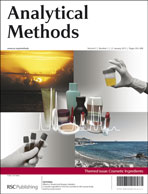Very few efforts have been directed toward interpreting the differences between chromatographic and spectroscopic fingerprints for the purpose of quality control, although similarity analysis based on fingerprints is commonly applied to quality consistency evaluation of herbal medicines (HM). In the current study, comparative evaluation of high-performance liquid chromatography (HPLC), ultraviolet (UV), and near-infrared (NIR) fingerprint techniques combined with chemometric methods has been conducted to control the quality of Chinese herbal injections. A set of Danshen injections (DSI) are chosen as an example of the relevance to contemporary HM. Similarity analysis by principal component analysis, identification using linear discriminant analysis and k nearest neighbor classifiers, and control charts based on Hotelling's T2 and DModX statistics are employed to evaluate the quality consistency of the DSI samples from three different manufacturers. The results in this study demonstrate that the UV spectroscopy technique combined with chemometric methods is useful for the identity and consistency evaluation of DSI. Such an approach is believed to be equally applicable to other HM.

You have access to this article
 Please wait while we load your content...
Something went wrong. Try again?
Please wait while we load your content...
Something went wrong. Try again?


 Please wait while we load your content...
Please wait while we load your content...